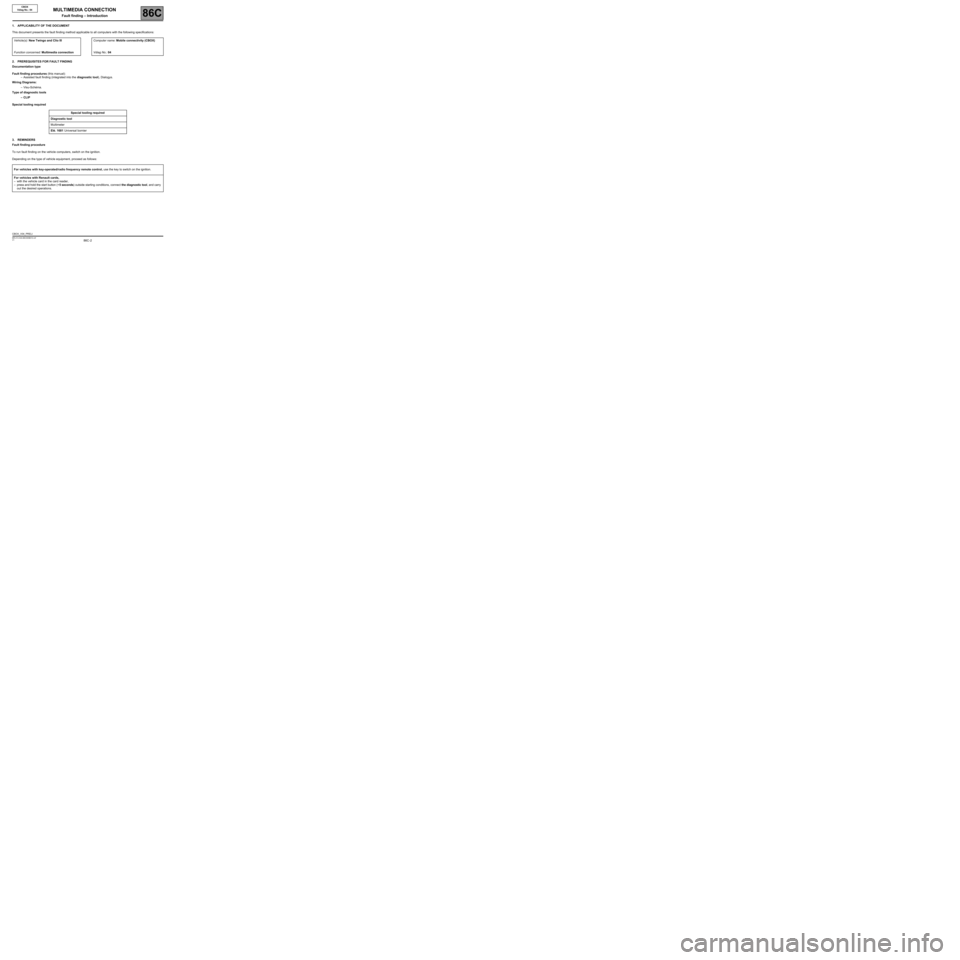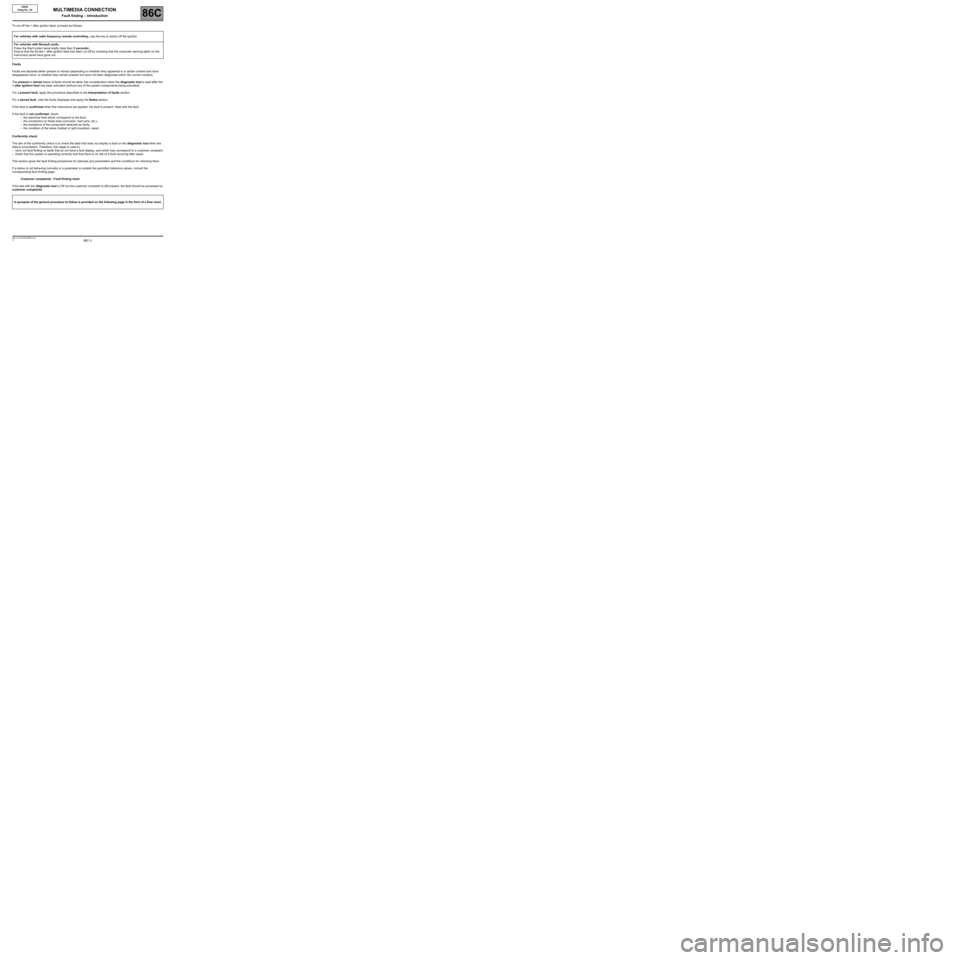remote start RENAULT TWINGO RS 2009 2.G Electrical Equipment - Multimedia Connection Workshop Manual
[x] Cancel search | Manufacturer: RENAULT, Model Year: 2009, Model line: TWINGO RS, Model: RENAULT TWINGO RS 2009 2.GPages: 48, PDF Size: 0.29 MB
Page 2 of 48

86C -2V1 MR-413-X44-86C000$010.mif
86C
CBOX
Vdiag No.: 04
1. APPLICABILITY OF THE DOCUMENT
This document presents the fault finding method applicable to all computers with the following specifications:
2. PREREQUISITES FOR FAULT FINDING
Documentation type
Fault finding procedures (this manual):
–Assisted fault finding (integrated into the diagnostic tool), Dialogys.
Wiring Diagrams:
–Visu-Schéma.
Type of diagnostic tools
–CLIP
Special tooling required
3. REMINDERS
Fault finding procedure
To run fault finding on the vehicle computers, switch on the ignition.
Depending on the type of vehicle equipment, proceed as follows:Vehicle(s): New Twingo and Clio IIIComputer name: Mobile connectivity (CBOX)
Function concerned: Multimedia connectionVdiag No.: 04
Special tooling required
Diagnostic tool
Multimeter
Elé. 1681 Universal bornier
For vehicles with key-operated/radio frequency remote control, use the key to switch on the ignition.
For vehicles with Renault cards,
–with the vehicle card in the card reader,
–press and hold the start button (+5 seconds) outside starting conditions, connect the diagnostic tool, and carry
out the desired operations.
CBOX_V04_PRELI
MULTIMEDIA CONNECTION
Fault finding – Introduction
Page 3 of 48

86C -3V1 MR-413-X44-86C000$010.mif
MULTIMEDIA CONNECTION
Fault finding – Introduction86C
CBOX
Vdiag No.: 04
To cut off the + after ignition feed, proceed as follows:
Faults
Faults are declared either present or stored (depending on whether they appeared in a certain context and have
disappeared since, or whether they remain present but have not been diagnosed within the current context).
The present or stored status of faults should be taken into consideration when the diagnostic tool is used after the
+ after ignition feed has been activated (without any of the system components being activated).
For a present fault, apply the procedure described in the Interpretation of faults section.
For a stored fault, note the faults displayed and apply the Notes section.
If the fault is confirmed when the instructions are applied, the fault is present. Deal with the fault.
If the fault is not confirmed, check:
–the electrical lines which correspond to the fault,
–the connectors on these lines (corrosion, bent pins, etc.),
–the resistance of the component detected as faulty,
–the condition of the wires (melted or split insulation, wear).
Conformity check
The aim of the conformity check is to check the data that does not display a fault on the diagnostic tool when the
data is inconsistent. Therefore, this stage is used to:
–carry out fault finding on faults that do not have a fault display, and which may correspond to a customer complaint.
–check that the system is operating correctly and that there is no risk of a fault recurring after repair.
This section gives the fault finding procedures for statuses and parameters and the conditions for checking them.
If a status is not behaving normally or a parameter is outside the permitted tolerance values, consult the
corresponding fault finding page.
Customer complaints - Fault finding chart
If the test with the diagnostic tool is OK but the customer complaint is still present, the fault should be processed by
customer complaints. For vehicles with radio frequency remote control/key, use the key to switch off the ignition.
For vehicles with Renault cards,
Press the Start button twice briefly (less than 3 seconds),
Ensure that the forced + after ignition feed has been cut off by checking that the computer warning lights on the
instrument panel have gone out.
A synopsis of the general procedure to follow is provided on the following page in the form of a flow chart.